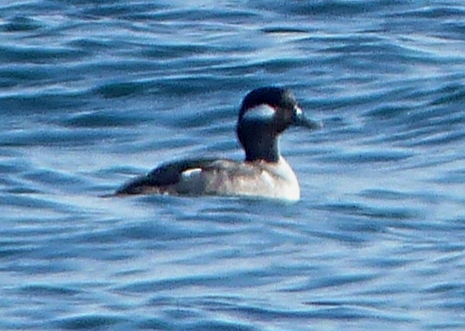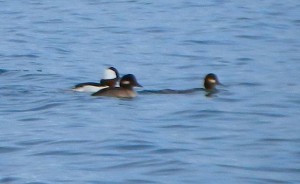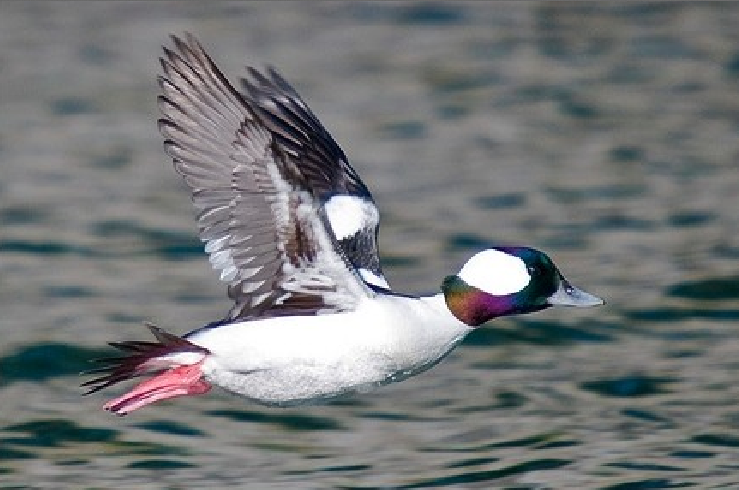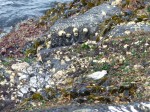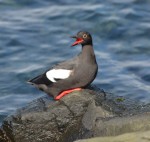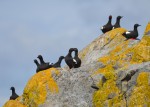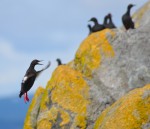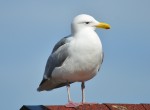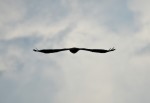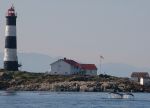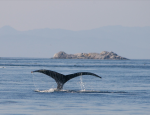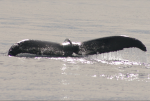Shipping in the Strait of Juan de Fuca poses the greatest risk to the ecological integrity of the Race Rocks Ecological reserve. The risk of chronic oil spills increases directly with the Number of vessels in the waters. Chronic oil is a greater risk to marine life around the world than are the disastrous large spills, but the risk from both will increase if tanker traffic is allowed to proliferate in the Strait of Juan de Fuca:
These tagged posts detail the risk to this and other Marine Ecological reserves on southern Vancouver Island: https://www.racerocks.ca/tag/oil-spill/
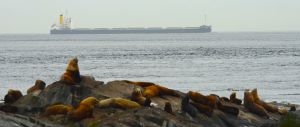 On this page we profile Marine Vessel Traffic Images which show how close they are to the Animals of Race Rocks
On this page we profile Marine Vessel Traffic Images which show how close they are to the Animals of Race Rocks
The live tracking image below shows the ships, their size and other details that are in the Strait around Race Rocks right now.
Either go to this site and create a username and password to access:
or use the more restricted map below:
Problems with Marine Vessels and their risk for Race Rocks:
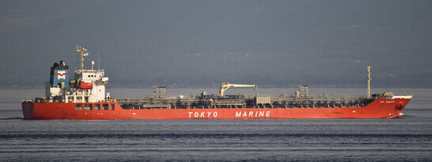 You can see other images of some of the wide variety of ship traffic past Race Rocks Ecological Reserve taken by Ryan Murphy when he was Ecoguardian : flickr site |
It has always been a concern that Race Rocks is located in a very vulnerable location in the Entrance to the Strait of Juan de Fuca. There is a need for regulations preventing the dumping of bilge and sewage from ships, and an emergency plan in the event of disaster from marine shipping.Shipping Pr oblems: oblems:The history of shipping in the past in the area is grim evidence that accidents happen. A fuel or chemical spill in the Strait of Juan de Fuca would have an untold impact on the biodiversity of the Ecological reserve.  Major Marine Vessel Casualty Risk and Response Preparedness in British Columbia Major Marine Vessel Casualty Risk and Response Preparedness in British ColumbiaPrepared for Living Oceans Society Sointula/Vancouver, BC Canada by EnviroEmerg Consulting Services Cowichan Bay, BC CanadaGovernment of Canada Announces Ballast regulations, June 2006 |
Cruise Ship Problems: See the following reference link on potential problems from Cruise ships and how they can be rated for environmental safety with the Cruise Ship Environmental report card.Cruise Ship Dump Raises Alarm See the following reference link on potential problems from Cruise ships and how they can be rated for environmental safety with the Cruise Ship Environmental report card.Cruise Ship Dump Raises AlarmLouise Dickson, Times Colonist Thursday, May 08, 2003The accidental dumping of raw sewage into Juan de Fuca Strait has renewed calls for stronger environmental regulations governing cruise ships.Norwegian Cruise Lines has confirmed that its ship, Norwegian Sun, dumped about 62,000 litres of raw sewage into American waters near Port Townsend, southeast of Victoria. |
| Victoria’s Cruise Ship Industry: Economic Benefits and their Environmental ImpactsBy: Elliot Houlston and Carly Daoust , 2005″Being that a cruise ship functions like a small city, it will pollute like a small city as well. In one week’s time a single cruise ships empties 210,000 gallons of sewage (human waste), 1,000,000 gallons of grey water (water from sinks, bathing and washing), 8 tons of solid waste (paper, plastic, cardboard, food waste) and 25,000 gallons of oily bilge water8. Some hazardous wastes such as photo chemicals and used paint are produced also. These are only the water pollutants created by cruise ships. There are many air pollutants as well.”Dirty Waters: Cashing in on Ocean Pollution 18 January 2010 in DC BureauBy David Rosenfeld |
| Return to Index of Environmental Disturbances to the ecosystem at Race Rocks |

